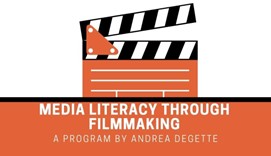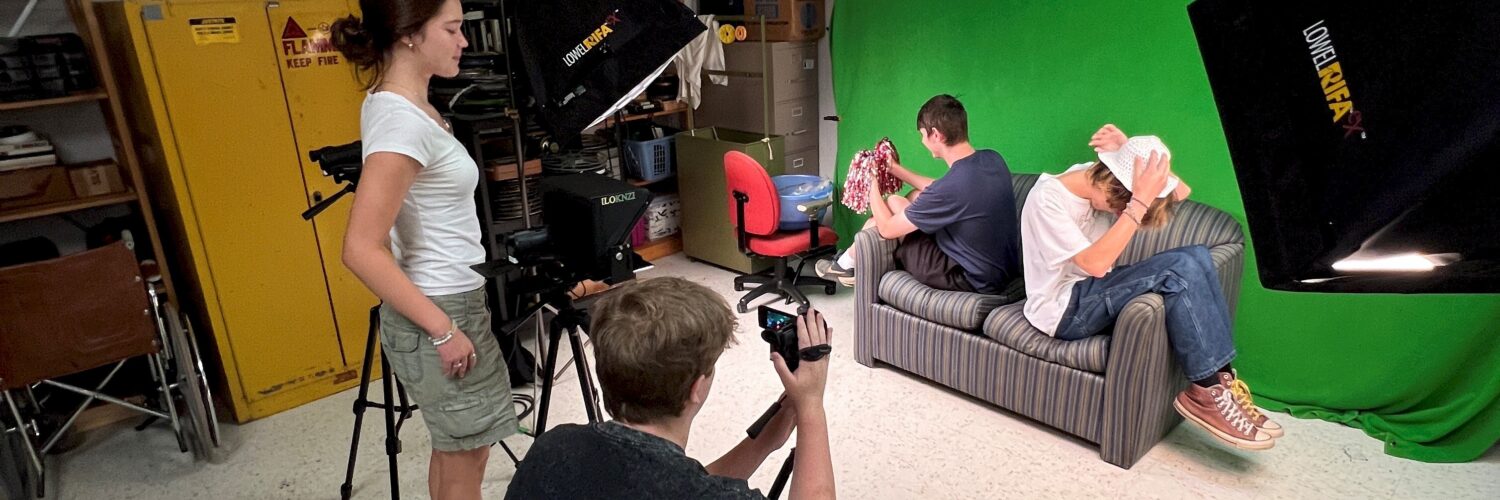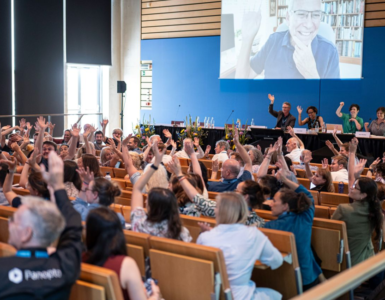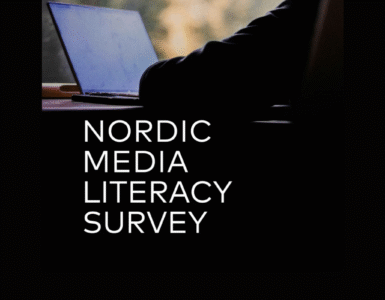by Andrea DeGette, Alamance Community College, USA.
Media Literacy Through Filmmaking posits: the building blocks of media literacy are pulled from the box of media production then put together in order that sense can be made of how images and sound work together in our 21st century communication.
A producer of digital media gains media literacy skills through the discipline of creation.
Once a content creator, always an educated consumer of media. Thus to produce media equates directly with the possession of media literacy. The ability to decipher and comprehend our complex media landscape is the basis for literacy which must be expanded to include multimodal communication. Letters make words make sentences make paragraphs make communication for the traditionally literate. We know how to read and write and we can prove it! Write your name! What do those letters together signify? Now add an image to that word and you have the meaning altered, changed or supported.
In the 1980s I began to teach video, film and photography to public school students. I quickly became enamored with the way that media creation resonated with the hearts and souls of my students. I was astonished by their adaptations of current trends to bear down on their personal crises. They used the Dancing Girls and Wrestling Boys, the talk show formats (Tiffany Talks) to underscore their own realities. The stories they created in video were immediately available to view and share. The invention of social media began as soon as this immediate feedback was available.

There is a vocabulary of film narrative that has been developing along with the invention of moving pictures, along with technology which has changed the delivery and industry of movies, advertising, news, and documentary. That vocabulary must adapt to these changes and once a new vocabulary of film narrative is updated and shared, this list will be added to the tenets of Media Literacy Through Filmmaking. Meanwhile we have the basic elements to work with to bring media literacy–through filmmaking–to students of all ages.
The basics of media literacy through filmmaking are a natural progression of skills, breaking down the elements of digital media into parts, similar to letters and words, in order to bring the experience of creation to bear on what is then forever imprinted onto the producer’s mindset. This media literacy via digital creation forces the awareness of a writer, camera, editing, text, music, etc into the creator’s present and future.
The producer will never be able to watch a movie in the same way again.
The producer has changed the rules of the game. After the illumination of production dawns, suddenly arms of the corporate system are not so long, its fingers not so facile. A certain honesty of perception can accompany the process of creation as well.
I believe that media literacy must come from innate awareness of how the media works, with sound and picture juxtaposed in always new, innovative, and ever-changing ways– and this recognition must stem from a nascent grasp of how the media comes about.

Author
Andrea DeGette is a filmmaker and educator (NAMLE Teacher of the Year 2022) working with K-12 since graduating from NYU in 1984. Her passion for media literacy has informed her teaching for over 30 years. DeGette is currently working on an Open Educational Resource: Media Literacy through Filmmaking: How We Story/Why We Story.














